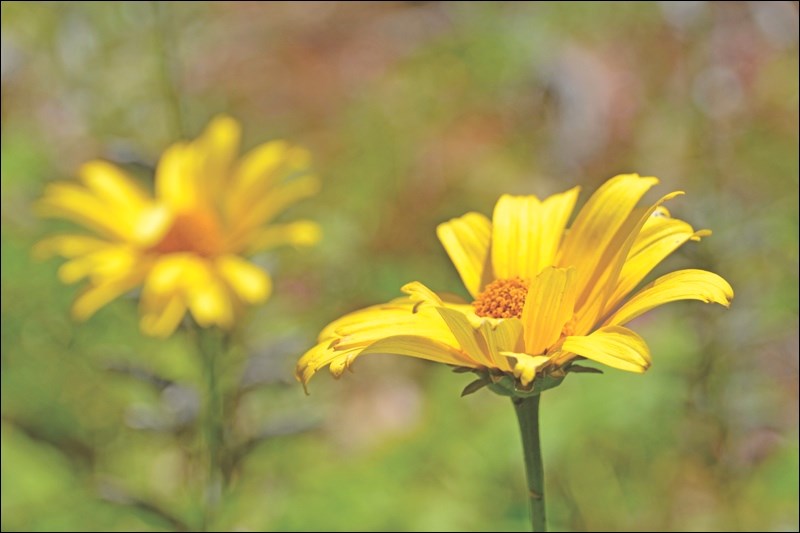By the middle of August, many perennial gardens are no longer in bloom. However, there are a few perennials that will provide late bloom.
False sunflower (Heliopsis helianthoides), also known as Summer Sun or Bressingham Doubloom, will bloom from summer into September, especially if deadheaded. They are bushy plants growing to four feet tall with golden daisy-like flowers.
Sunstruck is a shorter form, with variegated green and white leaves and golden flowers. The single-flowered hollyhocks, biennial or perennial types, bloom into late summer.
Another late bloomer is the New England aster (Aster novi-belgii x hybrid), also tall and bushy, with many purple or pink flowers. These will bloom past the first frosts.
Additional interest in late summer and fall is provided by plants that are taller or have interesting foliage. Different hostas, which come in miniature to four-foot heights with leaves of different shapes, textures, colours and variegation, stand out at this time. Goatsbeard (Aruncus dioicus), lady fern and astilbes add interest with their finely cut foliage.
Keeping control
The common Ostrich fern is not recommended because it can become agressive. It may be well-behaved for a few years, and then new plants will start popping up in various places quite distant from the original plant, spread by underground stems. So how can you control it?
Hardy perennials that spread by roots or underground stems can be planted in a large pot, and then buried in the ground up to the rim. Drainage holes are essential, and it is a good idea to add a few more holes. I find a drill with a large bit works well for this.
The soil in the pot should be at the same level as the surrounding soil, and the rim needs to be above the surface so that roots cannot creep over the top.
The size of the pot depends on the size of the plant you wish to contain. Large plants need a large pot, but for smaller plants you may wish to use two or more smaller pots to cover a larger area. We have used a very large pot to contain the tall grass that grows wild along the highway.
Other plants you may wish to contain are snowdrop anemone, lily of the valley, clustered bellflower, Shasta daisy, and even creeping bellflower.
Another way to contain the smaller spreaders is to plant them in an area from which they cannot escape, such as a patch of garden enclosed on all sides by sidewalk. This is the only way to contain goatsbeard, which is extremely aggressive.
In the next article we will discuss how to care for your perennial garden to minimize maintenance and keep it looking good.




